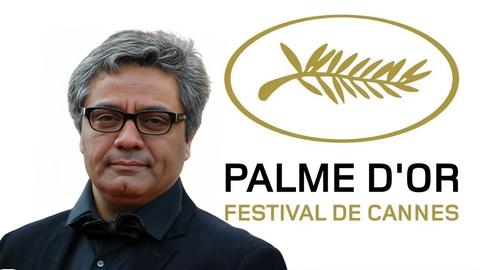Over the past 20 years, he has never missed a war. Wherever bombs have been dropped, missile fire launched and people have been forced to flee their homes and towns, he, Reza Deghati, 63, is there, camera at the ready. Be it Afghanistan, Sarajevo, Iraq or Syria, the Iranian-French photojournalist is always there to capture the traumas of war. Currently, he is in Shengal, a town that until very recently was under the control of Islamic State (Daesh) for two long years.
During his time as a war reporter, Deghati has also taught refugees how to shoot photographs and films, how to report and in the process drawn other people to his passion in life. Although he never trained as a photographer - he actually studied architecture at university – photography was a hobby from a young age. Later on, during the Islamic Revolution of 1979, he filmed the Green Movement, which was integral to kickstarting his career as a photojournalist. His photos from that time became so popular that the New York Times signed a contract with him. That same year, he also became the only photographer to document the American hostage crisis in Tehran. Then just several days later, he left the Iranian capital to cover the Iran-Iraq war.
“The images of war never leave me. I press the shutter key with wet eyes and a broken heart,” Deghati says from Shengal. “What’s different here though to other wars is that this city is completely ruined. The city center, which was built from stone and several hundred years old, was completely destroyed. The city is abandoned. The people have left their homes and fled. They can’t return now. ISIL has installed bombs as traps in many areas, which will explode if you open a door or the like.”
The Kurdish Peshmerga forces, who recently liberated the town, are the only remaining people in Shengal. Having defeated Daesh, they are proud in the knowledge that they pushed the war’s frontline several kilometers outside of the city. The city is also strategically important for them as one of the main connecting roads between Baghdad and Syria passes through the town. “Every now and then, people come back to check on their houses and search the rubbles to see if they can find anything to take with them to their new homes but for the most part it’s abandoned,” Deghati says.
The bodies of several Daesh members lay strewn, slowly decomposing, in the middle of the city but even the peshmerga dare not move them. “IS used to attach bombs to bodies so that they would explode if they were moved, which is why they’re afraid to move the bodies. So they’re left in the middle of the city, which creates an ugly and sad scene,” he says.
Deghati explains that even though every person and child has a tragically sad story to tell and it is impossible to not feel moved by these, it is crucial that he uses this sadness to make his photos even more real and powerful. What he remains most in awe about though is how people never lose hope in wartime, even in the worst of situations.
“To reach Shengal, you have to cross over the Shengal hill, which is where the refugee camp is. Two years ago, people with bare feet came here when it was 50 degrees, all of them hungry. Many children died,” Deghati. “You’ll remember the photos. It was the height of homelessness and human desperation. But these very same people were so full of joy when they heard the news that the city had been liberated that they started dancing. This shows that they still have hope.”
Deghati says all of the atrocities he has heard about during the war, nothing is worst that the trading of Yazidi and Christian women. “It’s hard to believe that the people who do this are in affiliated to any religion or humanity,” he says. “The “market” was in front of the big Mosul mosque and the trade happened just like you read in history books about slavery. People come, look at the women and choose. Prices are generally between 100 and 200 dollars but some girls are sold for as little as 15 dollars.”
Some of the Yazidi families have rebought their loved-ones through a middleman but doing this is expensive and can cost anything between five to ten thousand dollars. Deghati decided to set up a photography workshop for the Yazidi girls that were freed after the town was liberated. He brought them cameras and began teaching them how to use them.
He adds, “During the two years that I’ve come to the region, I’ve distributed cameras to young people in Syrian refugee camps and taught 20 of them photography, filmmaking and journalism so they can document for themselves the situation in the camps.”
Deghati believes the mass media does not accurately portray war, spending too much time on the military side of it and too little on its effect on people. This is why he focuses on human subjects.
“I could easily shift to fashion photography now. I could become famous and make much more money but my concern is to dedicate my short life to serving people with my art form,” Deghati says. “I take photos so people are aware of the meaning of war and its injustice, and in protest of the rulers who enter wars at great human cost.”
Related articles:
visit the accountability section
In this section of Iran Wire, you can contact the officials and launch your campaign for various problems

























comments